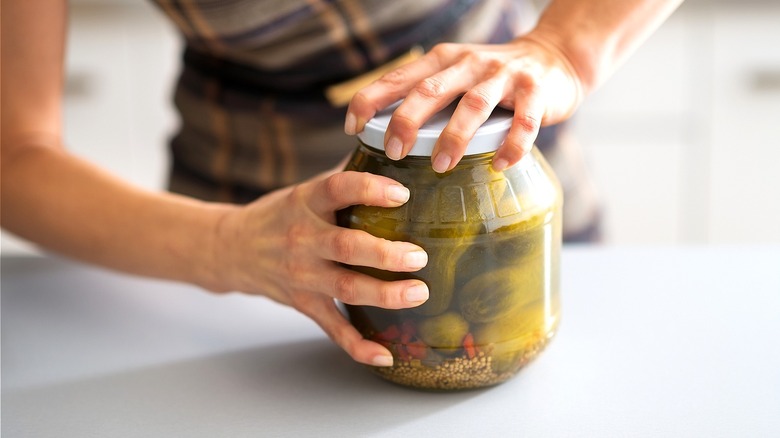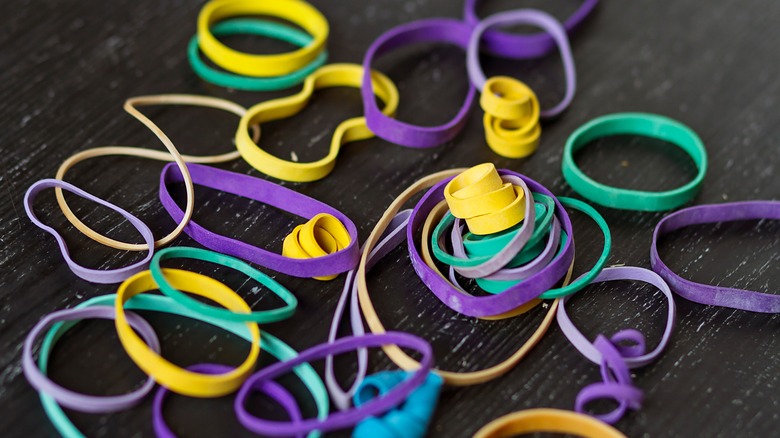The Handy Office Staple That's Perfect For Opening Stubborn Jar Lids
You tried tapping it with a wooden spoon, running it under hot water, and prying it open with a screwdriver, but the jar lid you want open is seemingly cemented shut. And, unfortunately, you aren't neighbors with Dwayne "The Rock" Johnson, so now what? Don't panic. You don't need brute force to unlock the contents of a stubborn container. Rather, simply stroll into your home office and grab a far more supple solution: a rubber band.
You're not the first homeowner to declare war on an unyielding jar lid. Whether it's kimchi, jelly, mustard, dill pickles, or a marinara jar, sometimes no amount of twisting and turning — or cursing and swearing — will loosen the lid. Don't take the loss personally. Struggling to open a stuck jar is not a reflection of your strength. These days safety-sealed containers have become an industry standard to increase shelf life. Lids are harder to unscrew because of a vacuum created during manufacturing, where oxygen is expelled from the jar, sealing the lids in place.
Couple that with damp hands from cooking or washing dishes and the process of opening a defiant lid becomes a slippery exercise in futility. If this has become a habitual dilemma in your home, try flipping the script and letting your brain trump brawn. Lodged lids don't stand a chance when you put mind over muscle with a simple rubber band remedy that relies on the science of traction to release a tough top.
How to use a rubber band to open stubborn jar lids
It's all about the grip. Rubber bands allow you to secure a firm grasp on jar lids that refuse to budge. Amazingly, with help from a simple loop of elastic, you can employ leverage to amplify force and successfully pop off that uncooperative top.
To start, examine the size of the lid. Larger covers, like those used on gallon-sized pickle jars, require thicker rubber bands. However, if you only have the thin variety on hand, stack them together or twist longer ones around the lid multiple times to increase bulk. Thicker rubber bands have more girth, which provides more surface area for you to grip. The downside is they snap easier since they're not able to stretch as far as thinner types. Once you evaluate the scale of the lid, determine whether you need a rubber band that's more robust and durable or one that's slimmer and stretchier.
Next, attach the rubber band to the edge of the jar's lid by stretching it to the point that it forms a tight fit. Then, use your dominant hand to grip the rubber band and twist off the top. To ensure an effective clasp, it's not a good idea to substitute traditional rubber bands with elastic hair ties. While they may be tempting to use in a pinch, most ponytail holders contain nylon or polyester, which makes them too slippery to create the traction needed to loosen stubborn jar lids.

